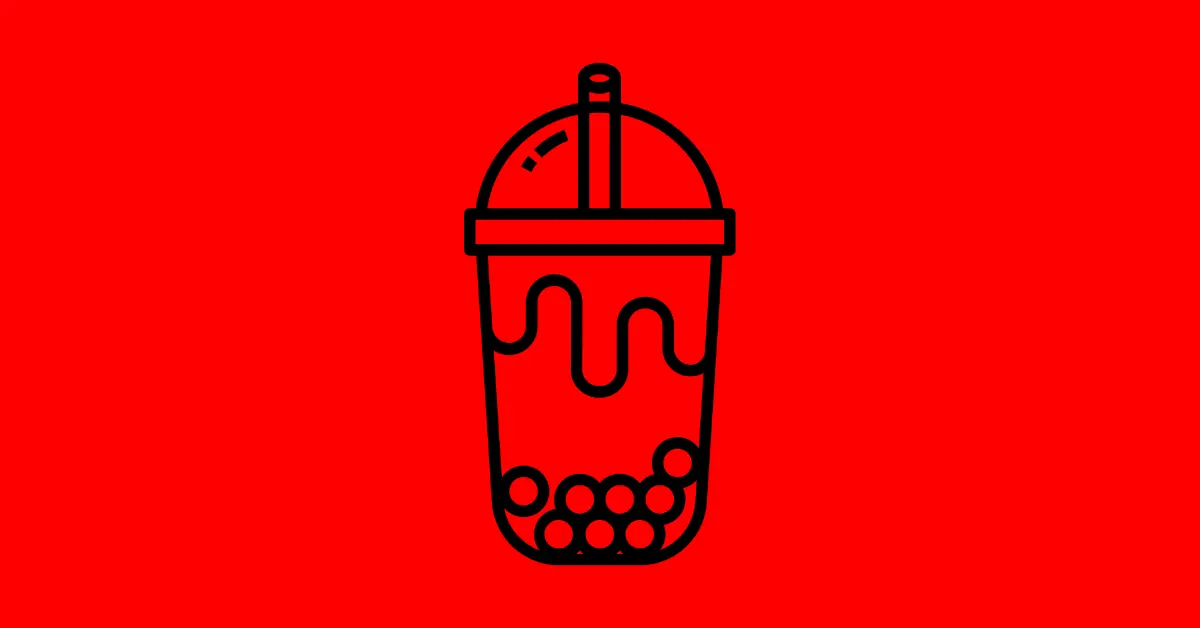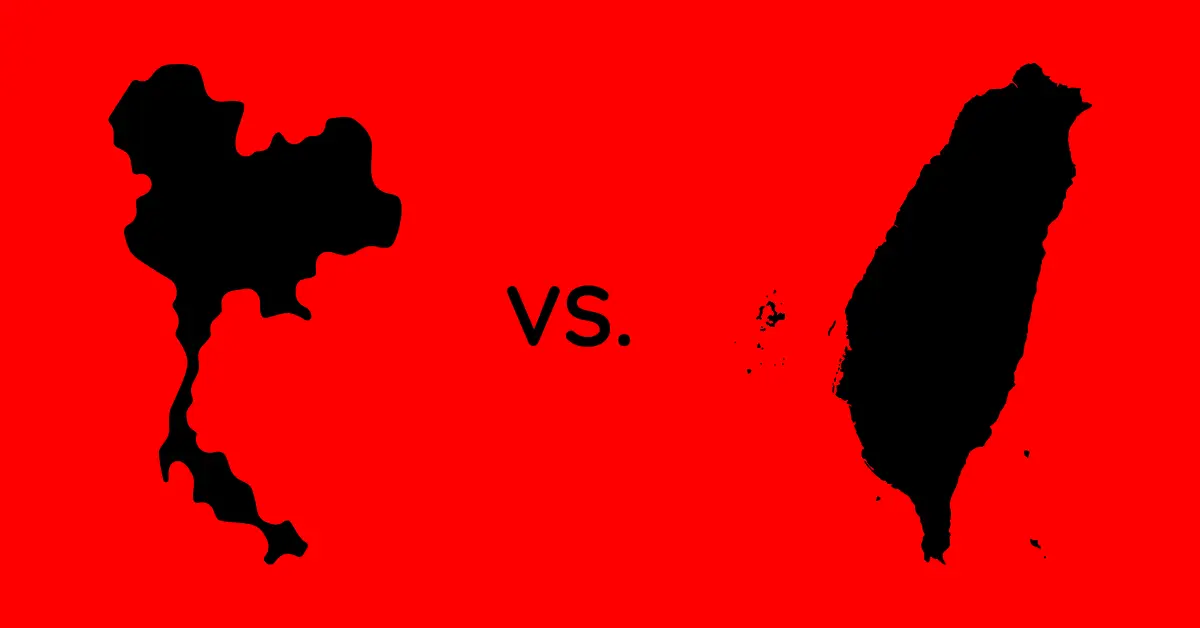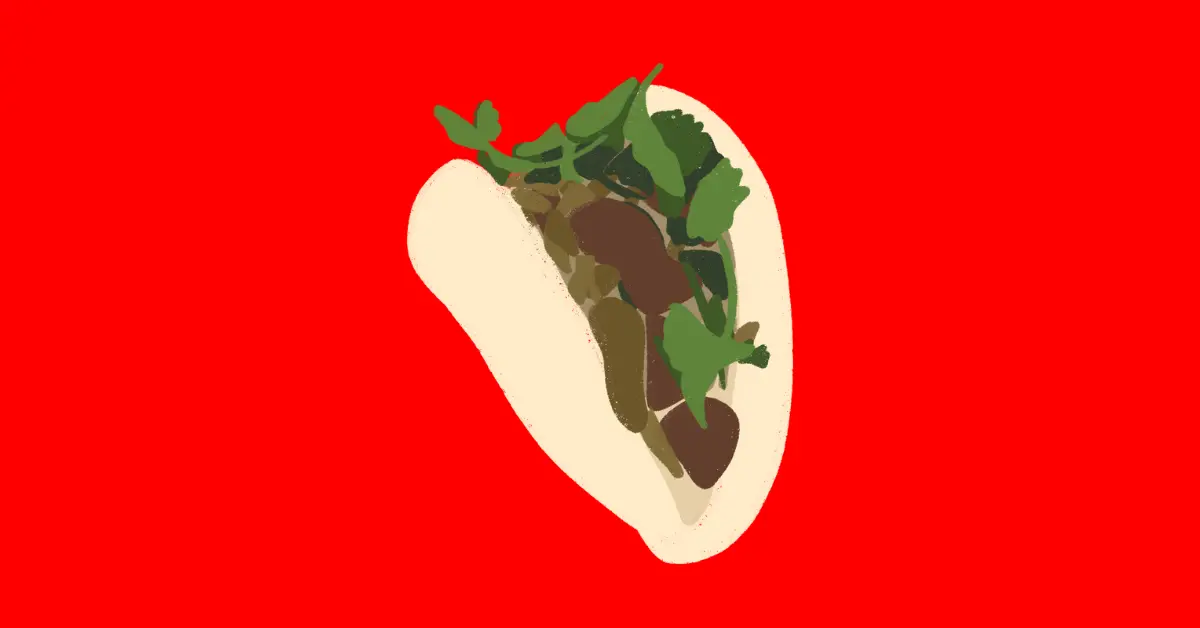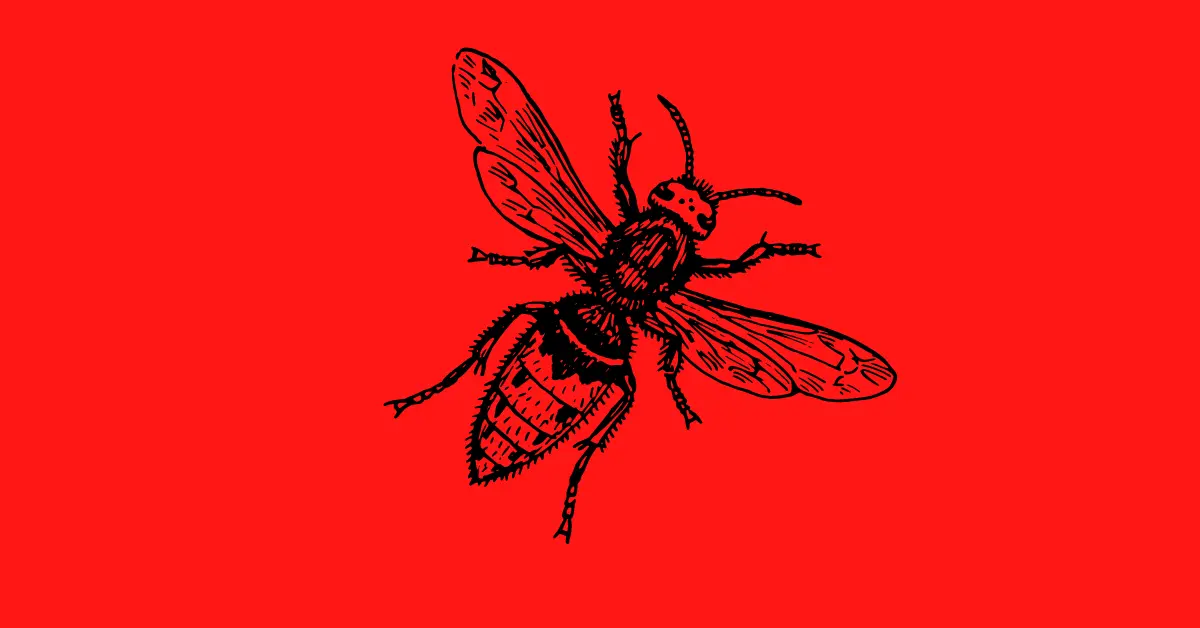This is an overview of Taiwanese culture. Keep reading to learn more.
I’ve lived in Taiwan for more than 5 years and have learned a lot about Taiwanese culture. I compiled what I’ve learned into this guide.
Different Groups of People Throughout Taiwan
Over 95% of Taiwanese identify as having Han Chinese ancestry. Whereas, Austronesian Taiwanese indigenous peoples make up 2.3%. Immigrants make take up the remaining 2.6% of the nation’s population. Indonesians and Vietnamese make up the bulk of foreign residents.
Taiwanese people who have Han ancestry often have three separate subgroups. These include Hakka, Hoklo, and mainlanders. Whereas, you can divide the aborigines into 16 officially recognized tribes.
Taiwanization 101
Taiwan has a complex political status.
Taiwanization is a growing movement by some Taiwanese people who strive to reduce that complexity by identifying themselves as a separate entity from China.
Part of this means changing the country’s constitution to change the Republic of China, Taiwan’s official name, to Taiwan.
It also includes Taiwanese creating their own identity by promoting local languages over Mandarin Chinese, educating people about their geography, history, and culture from Taiwan’s perspective.
Taiwanese Art
Before Japan colonized Taiwan, most arts involved aboriginal woodcraft. They’d craft wooden jars, decorative boxes, and more.
When The Land of the Rising sun occupied Taiwan, they introduced a lot of modern comforts, including art.
The Japanese government introduced Taiwan to watercolor and oil paintings. They also established schools dedicated to art, which was a huge transformation for Taiwan.
Once Japan gave up Taiwan, art remained in Taiwan and developed over time. When the Kuomintang (KMT) retreated to Taiwan, they brought many prestigious Chinese artists with them.
From there, they developed art-focused universities and colleges throughout the country.
Nowadays, the Taiwanese have expanded their artistic talents into varying fronts.
Photography, ceramics, glass art, and other mediums.
These strides in art have transformed Taiwan into one of Asia’s most massive art markets.
Recreation in Taiwan
Taiwan’s citizens have a lot of stress and must endure long hours of working. Because of this, they’ll want to take advantage of every second they have when off of work.
If they want to go out, they’ll meet friends at restaurants, go dancing, vacation, hike, visit the park, or play sports.
Some of the nation’s most popular sports include:
- Golf
- Martial arts
- Swimming
- Table tennis
- Badminton
- Baseball
- Volleyball
- Basketball
- Tennis
Many older Taiwanese people will gather at parks and take part in Tai Chi. It’s a series of gentle exercises that’ll help the body stay in constant motion while providing a workout.
Not all Taiwanese people want to go outside, though. Maybe they want to relax. So, they may go to an internet cafe, game at home, listen to music, watch TV series, or go shopping.
Taiwanese Food
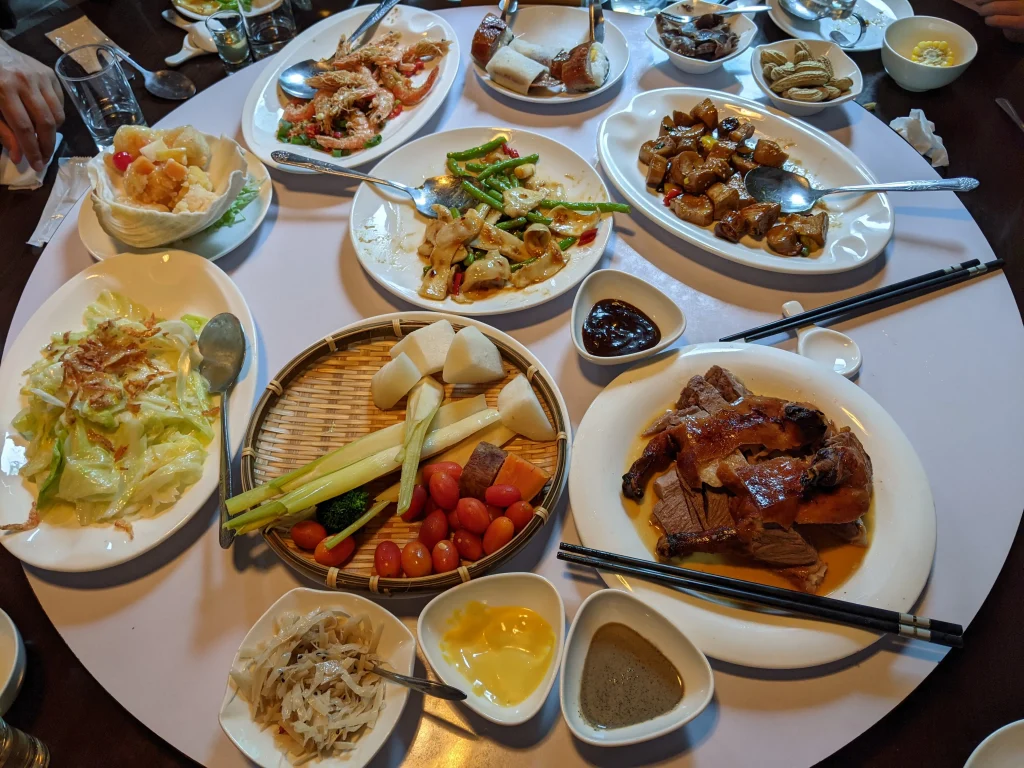
Taiwan has a lot of different cuisines that colonization and migration brought into the country.
When considering Taiwanese food, you will also want to think about indigenous people’s food, which was the earliest cuisine in Formosa.
1. Indigenous Foods
Each Taiwanese indigenous tribe prepared dishes tied to their region. For instance, The Tao people on Orchid island prepare dishes that focus on caught flying fish.
You’ll also find that various Taiwanese Aborigines use bamboo tubes as natural dishes and cooking utensils in some areas.
If you visit Wulai in New Taipei, Aborigines in that area will often prepare rice within bamboo tubes, which was some of the best rice that I’ve had.
2. Hakka Food
When the Hakka people emigrated from China to Taiwan, they also bought their cuisine into the island nation. While it’s like most Taiwanese food, it has some differences.
You can characterize most Hakka food as umami (savory), salty, and ripe with fragrance. Many of these flavors come from preservatives like salt, garlic, rice wine, and ginger. Moreover, many Hakka staples include soy sauce, pork, rice, and tofu.
3. Night Markets (Street Food Vendors)
Taiwan has over 60 night markets throughout the country—and even more street food vendors.
These street food stalls offer Taiwanese and foreigners a quick, easy, and affordable meal. Whether it’s a pig blood cake on a stick, or a cup of bubble tea, you can find great food at each market you visit.
Also, a lot of these markets have dishes they’re famous for. Nanjichang Night Market in Taipei is famous for its Nan Sesame Oil Chicken.
Most of these vendors offer food to go. Yet some places will have plenty of sit-in restaurants where you can order delicacies like Taiwan’s stinky tofu (fermented bean curd).
4. Caffeine Consumption
Tea serves as one of Taiwan’s cash crops, and there’s a good reason for this. The nation produces excellent-quality green, oolong, and black tea leaves.
Taiwan’s tea culture also includes traditional tea ceremonies and tea houses.
Also, wherever you go, you’ll find tea. Whether it’s bubble tea, milk tea, or regular tea. Most streets in Taiwan’s cities will have some sort of drink shop, where Taiwanese can stop by to get a caffeine fix.
Speaking of, Taiwanese also love coffee. Did you know Taiwan was a major producer of Arabica coffee throughout the early 1900s during Japan’s reign?
Unfortunately, despite Taiwan’s ideal growing climate for coffee, the country imports most of its coffee beans. Yet that hasn’t stopped their people from becoming superior coffee brewers.
Back in 2016, Taiwan’s Berg Wu dominated the World Barista Championship. Now, he owns a coffee shop in Taipei that I recommend visiting.
Like convenience stores, Taiwan also has coffee shops everywhere. Many of these include Seattle-based Starbucks, which is popular in Taiwan. Or, Taiwan’s Louisa.
If you prefer small businesses, you’ll find plenty of smaller shops spread throughout Taiwan’s cities and towns.
5. Taiwan’s Staple Foods
Taiwanese mostly eat meals based on pork and white rice. However, you will also find these foods as staple dishes:
- Chicken
- Rice flour or wheat noodles
- Cabbage
- Taro
- Sweet potatoes
- Seafood: tuna, squid, tilapia, mackerel, and shark
Most of Taiwan’s rice comes from certain parts of the country’s eastern cities, Taitung and Hualien.
Once winter hits Taiwan, the Taiwanese will flood into hot pot restaurants. These are dishes that start with a hot broth. Restaurants will provide bowls of vegetables and meats that you can simmer in your pot to your liking.
Throughout the entire year, you’ll find many Taiwanese buying dishes like oyster omelets or other deep-fried foods.
Taiwan Social Customs & Etiquette
Taiwan has interesting customs—like funeral strippers, for instance. While it’s not as popular anymore, you’ll still see it once in a while. The island nation has plenty of etiquette and social customs that deserves its post, so I’m only going to cover a few.
Concept of Face
There’s also the concept of face or Mien Tzu. It’s extremely important to Taiwanese, as it reflects a person’s dignity and reputation.
People can give, lose, or save face. To lose face means that someone caused another person embarrassment or ruined their reputation.
To save face means that you’ll negate the embarrassing act. For instance, saying that you didn’t explain yourself clearly.
To give face means that you’re complimenting someone or showing them respect.
Indeed face is important, it’s not everything in Taiwan’s customs and etiquette.
Dining and Entertaining
If a Taiwanese person invites you into their home for food, then that’s a sign that you’ve developed a relationship them.
Gift giving
Gift giving has many factors that you’ll want to consider. For starters, there’s a list of items that you shouldn’t give.
For instance, don’t gift four of any item, as it signifies death. Also, don’t give anyone sharp objects, because it signifies severing a relationship.
If you’re giving someone a gift, ensure you present the gift to them with both hands.
If you receive a gift, make sure that you don’t open the gift in front of the giver, because it’s considered rude to do so.
Taiwan’s Many Languages
Before Formosa became present-day Taiwan, indigenous languages dominated the island’s conversations. These languages include:
| Indigenous Language | Location Where Spoken |
|---|---|
| Atmis | spoken by the Atmis people, who reside on Taiwan’s east coast |
| Atayal | spoken primarily by the Atayal people |
| Bunun | the Bunun people’s language |
| Kanakanavu | spoken by the Kanakanavu |
| Kavalan | formerly spoken by the Kavalan people |
| Paiwan | the Paiwan people’s primary language |
| Puyuma | spoken by the Puyuma |
| Rukai | the Rukai people’s language |
| Saaroa | spoken primarily by the Saaroa people |
| Saisiyat | the Saisiyat people’s primary language |
| Sakizaya | a language related to Atmis |
| Seediq | also spoken by the Taroko and Seediq people |
| Thao | primarily spoken by tribes in Sun Moon Lake, the Thao people |
| Truku | spoken by the Taroko and Seediq people |
| Tsou | the Tsou people’s primary language |
After the waves of Han emigrations, Hakka, Mandarin, and Taiwanese Hokkien the country’s primary languages.
Even though Japan ruled over Taiwan for a brief period, Japanese never stuck as a primary language.
When the KMT fled to Taiwan and enacted martial law, they forbade anyone to speak languages other than Mandarin. Thus, over time, Japanese vanished from Taiwan.
Fortunately, the Taiwanese managed to keep their other languages alive during the Kuomintang’s harsh rule. Nowadays, a good number of Taiwanese households will speak Mandarin, Taiwanese, and Hakka.
For the most part, Taiwanese people up north will speak Taiwanese Hokkien and Mandarin. As you make your way further south, you’ll find more of a mix of languages.
If you go to aboriginal areas, they’ll mostly speak Formosan languages.
Or, if you go to a city with high concentrations of Hakka people (e.g. Hsinchu or Miaoli cities), they’ll mostly speak Hakka.
When browsing through Taiwanese television channels, you’ll find different networks that serve in various languages—even in English.
Speaking of—Taiwan’s government has bold plans to make the nation bilingual by 2030. This means that they’ll integrate more of the English language into Taiwan.
As of now, not many people in Taiwan know English. You’ll find the largest concentration of English speakers in Taipei City. But you can still make your way around Taiwan just fine without knowing the local languages.
Taiwan’s Love for Convenience Stores Explained
The worldwide convenience store franchise launched its first Taiwan store in February 1980. Now Taiwan has thousands of convenience stores. They’re not all 7-Eleven, though.
Many of you will likely recognize Japan’s Family Mart. Though you may not recognize Ok Mart, Hi Life, and Simple Mart—Taiwan’s other convenience shops.
If you come to Taiwan, you’ll literally see one of the above shops every couple of blocks when you’re in the city. Sometimes, you’ll find two of the same franchise within seeing distance—e.g. Two 7-Elevens.
Why do Taiwanese love convenience stores so much?
In 2020, Taiwanese averaged over 2021 working hours, making them a part of the country with the fourth most working hours in the world. Because of this, they need an outlet where they can get everything they need done.
That’s where Taiwanese convenience stores enter the picture.
Almost all convenience stores in Taiwan allow anyone to do the following:
- Deliver and receive packages
- Microwave meals
- Rest at their open seating
- Inquire smart card balances and refill them
- Pay bills
- Buy tickets
- Print and make copies
- Buy hot food like tea eggs, hot dogs, stuffed steamed buns
Though I haven’t seen these spectacles, yet, some Family Marts offer laundry services. This means that while you’re doing laundry, you can have dinner, pay your bills, and rest after a strenuous day of work.
Best of all, these stores remain open 24/7, which provides a flexible place for graveyard and daytime workers alike.
Religions in Taiwan
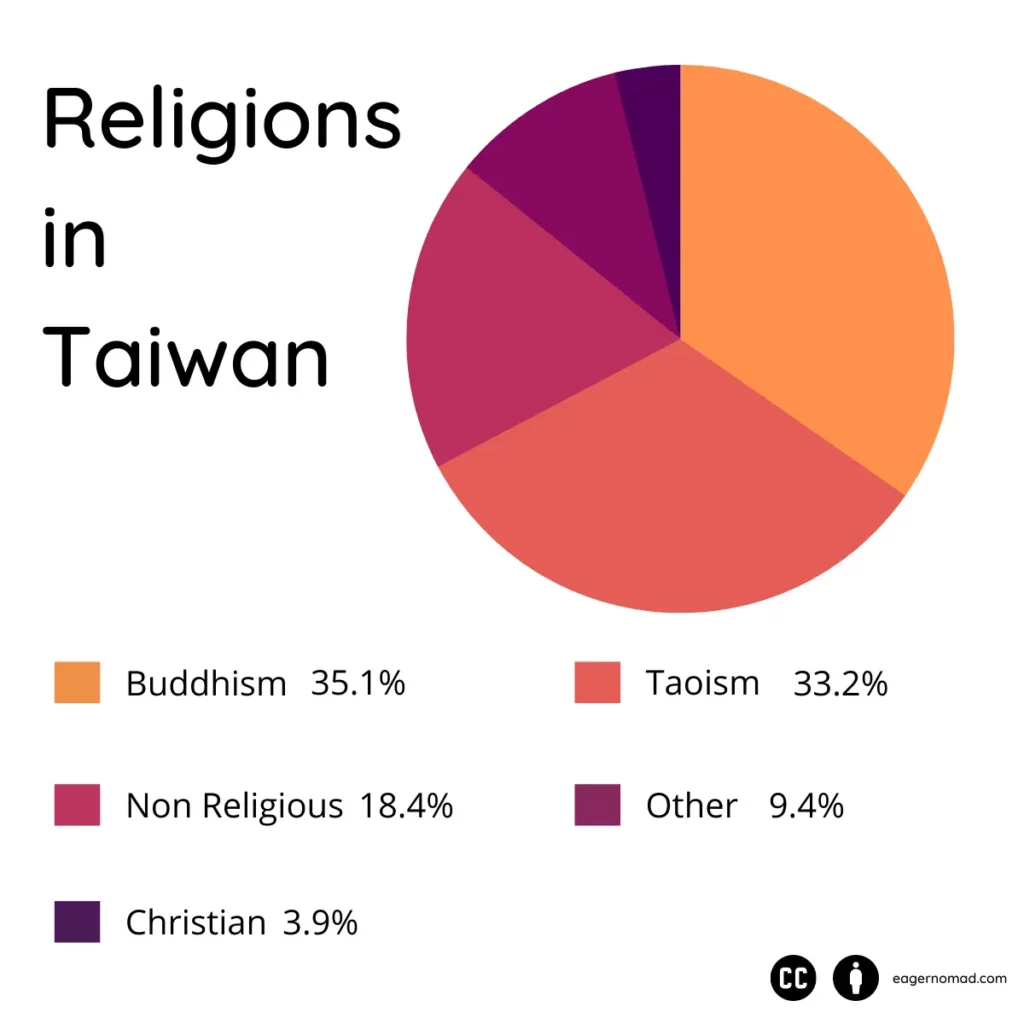
Taiwan’s home to a combination of over 33000 mosques, churches, and temples. Religion is also a huge part of Taiwan’s culture. Why? One reason is that many festivals throughout the country have something to do with religion.
For instance, there’s the Ghost Festival. It’s a Buddhist and Taoist festival where Taiwanese, among other Asian countries, will worship their ancestors. Moreover, they’ll perform special ceremonies to pay tribute to the ghosts who’ve entered the mortal realm during the ghost month.
However, what religions are dominant in Taiwan? Check out the chart below:
| Group People Identify as | Percentage |
|---|---|
| Buddhist | 35.5% |
| Taoist | 33.2% |
| None: agnostic or atheist | 18.2% |
| Other: Muslim, Jewish, etc | 9.4% |
| Christian | 3.9% |
The most popular religions are Buddhism and Taoism, both, of which have thousands of worship sites around the country. At each of their sites, they’ll practice different ceremonies. Moreover, their temples display excellent architecture.
Longshan Temple, which translates to “dragon mountain” in Mandarin Chinese, remains as Taiwan’s oldest temple that Fujian settlers built in 1738. During that time, it served as a place to worship for settlers during the Qing Dynasty.
Nowadays, people still use Longshan Temple for the same reason.
Anyway, moving on.
As for other religions, the Jewish community isn’t that large in Taiwan, as it’s mostly in Taipei.
As for Islam, over 280000 Muslims live in Taiwan. Moreover, the island nation ranked second as one of the most Muslim-friendly destinations.
Otherwise, Taiwan’s government protects freedom of religion. This means that religious groups can operate within this country without having to worry about persecution.
Taiwan Pop Culture
Taiwan has a 100% mobile penetration rate. While this could signify that every Taiwanese person has a smartphone, this may not be true because one person may own many phones. Like the Taiwanese man who uses over 41 phones to play Pokemon GO!
Taiwanese people love their phones. Whether it’s playing mobile games, browsing, shopping, live streams on Facebook, or watching Netflix. If you’re in Taiwan, you’ll often see old people swiping at their phones, so it isn’t just young people.
What else do Taiwanese like? Well, there are a fair number of internet cafes throughout the country, where people will often go to game, browse the web, smoke, and eat whatever foods the place serves.
Taiwan also has Taiwanese pop, who are popular throughout China and Taiwan and dominate the Mandarin-speaking music industry.
Because of this, some Taiwanese artists may struggle to decide whether they should throw their own country under the bus to satisfy China’s market. However, that’s not a topic I’ll cover in this post.
Taiwan doesn’t have visual media soft powers like Japan’s anime or America’s Hollywood, so Taiwanese will often import these pop culture aspects. These imports will often result in Taiwanese people cosplaying, attaining vast manga libraries, and binging American series and movies.
As for clothing, Taiwanese wear styles influenced by Japan, the US, and South Korea.
FAQs
Explore commonly asked questions about the country’s culture.
What Is Considered Rude in Taiwan?
A couple examples of what’s considered rude in Taiwan include neglecting to take your shoes off when entering someone’s home and don’t open red envelopes in front of the person who gifted it to you.
Also ignoring common superstitions in Taiwan may be considered rude to some. One example includes leaving your chopsticks upright in a bowl of rice.
What Is the Most Popular Food in Taiwan?
Taiwan has many popular foods like oyster omelets, stinky tofu, and minced pork rice. One of the dishes that most people know the country for is beef noodle soup.
Are Taiwanese People Polite?
Most Taiwanese people are polite. That’s because they’re raised to be polite toward anyone—even if they have someone.
Don’t take advantage of their kindness, though. As with anyone else, they can turn on you.
Do Taiwanese People Drink Alcohol?
Many Taiwanese do not drink alcohol. That is because between 45 and 47% of the people are unable to metabolize alcohol due to a aldehyde dehydrogenase (ALDH2) deficiency.
ALDH2 is an enzyme that helps metabolize alcohol.
Despite this fact, you will still find plenty of bars and places to buy alcohol throughout the country.
Is Taiwanese Food Spicy?
On its own, Taiwanese food is mostly savory. A number of Taiwanese will include chili sauce with their meals to give it an extra kick.


